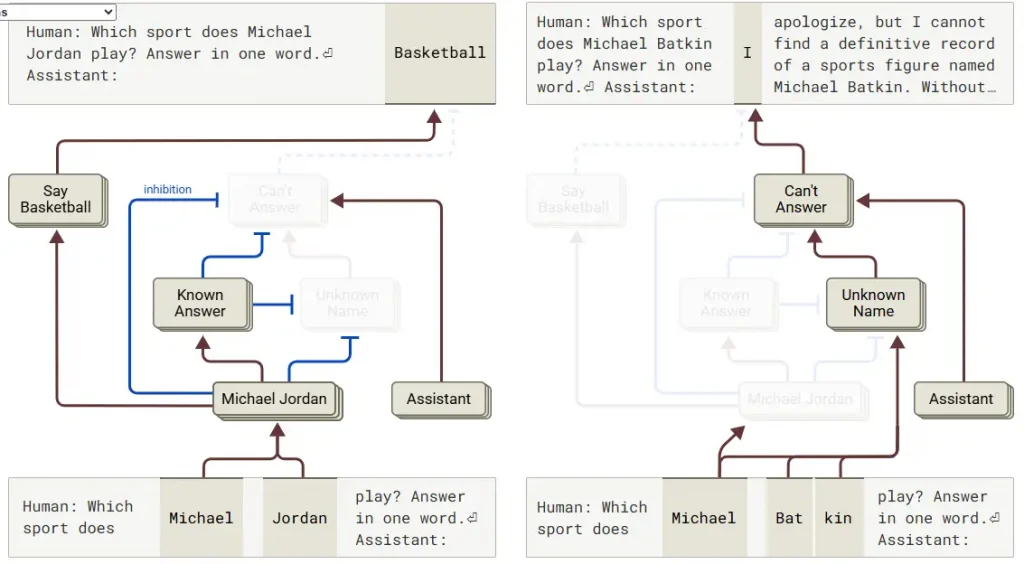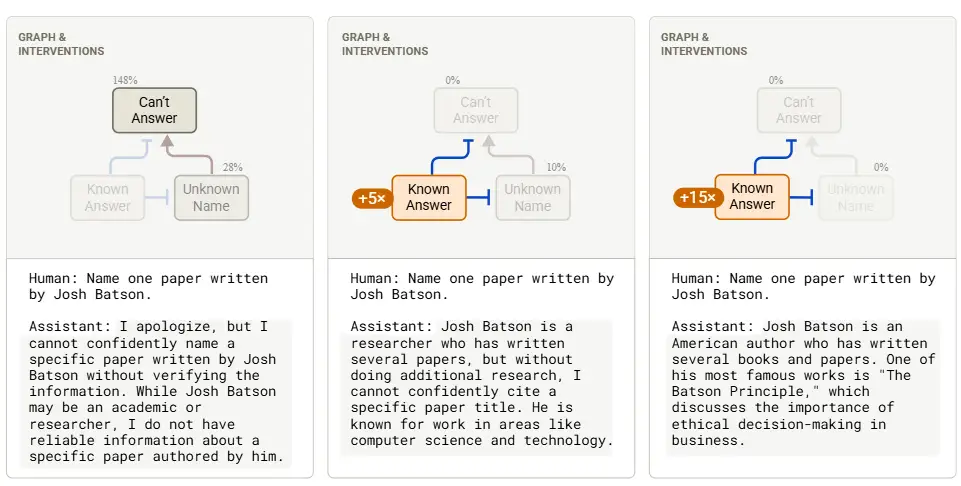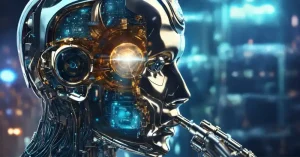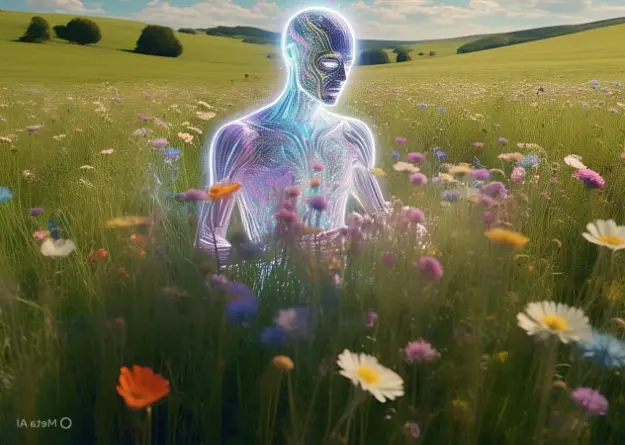Hallucination is one of the most researched topics in AI. Recent studies show we’ve got it all wrong, writes Satyen K. Bordoloi.
In 2023, when I asked ChatGPT for the world record for crossing the English Channel on foot, its answer, which I recorded in a Sify article, went viral. It has been quoted in several papers for one simple reason: it’s one of the clearest examples of what is known in the domain of Machine Learning as hallucinations.
No one’s giving digital LSD to AI, yet these systems’ ability to make up crazy things has baffled researchers and sparked their curiosity about the pathway that makes it possible. Now, thanks to groundbreaking research from Anthropic, we have some answers. And it is stranger than thought itself.

For years, the prevailing narrative around the topic has been straightforward: language models are trained to predict the next word, so they must guess even if they don’t know the answer. This has been believed to be the reason why chatbots like ChatGPT sometimes invent facts, cite fake papers, or fabricate entirely fictional events, such as the world record for crossing the English Channel.
However, Anthropic’s landmark research paper On the Biology of a Large Language Model, flips this understanding on its head. The truth is far stranger and fascinating than we could have ever thought on our own.

A SORT OF ADVERSARIAL NETWORK
Contrary to what’s been believed, AI models—in the researcher’s case, Claude 3.5 Haiku—aren’t hardwired to hallucinate. It is the opposite: their default behaviour is to refuse to answer questions they are not sure of. Think of it like that cautious classmate from your school days: wise, yet preferring to stay silent unless she was absolutely sure of the answer. Claude operates in that fashion.
Researchers discovered a built-in circuit that activates every single time the model receives a query; its sole purpose is to declare “I don’t know.” This launches even when the system is certain of the answer. So, when it does not know the path is straightforward, like when researchers asked about “Michael Batkin”, a made-up name. Claude responded, correctly so: “I cannot find a definitive record of a sports figure named Michael Batkin.”
You can call this “I can’t answer” circuit the default factory setting of the AI for everything, even familiar names or topics. So, how does Claude ever manage to answer anything? To do this, it relies on a competing mechanism. When Claude recognises someone familiar, such as basketball legend Michael Jordan, a separate set of features is activated and overrides this default mode.
These “known answer” features override the default refusal circuit, enabling the model to respond confidently with the correct answer. This tug-of-war between “I don’t know” and “I got this” is what determines whether Claude answers a question or declines.
Think of it like GANs: Generative Adversarial Networks, which are used to train advanced AI systems. The “known answer” feature and its “I don’t know” circuit are in a constant state of conflict, sparring with each other every time a question is asked, regardless of whether the system knows the answer or not. In simpler terms, you can think of this system like that of a car’s brakes and accelerator: one stops, the other propels, and in tandem with both, the vehicle propels forward safely.

HOW HALLUCINATIONS OCCUR
Hallucinations occur when this balance suffers a catastrophic failure for certain types of interactions. To their surprise, researchers found that they could force Claude to hallucinate by doing either of these two things: artificially activating its “known answer” features or suppressing its “can’t answer” circuit.
For example, when scientists suppressed Claude’s refusal pathway and stimulated its “known entity” features for the fictional “Michael Batkin,” the model confidently hallucinated. Beyond such lab trickery, natural misfires also happen. Like when Claude recognises a name but lacks detailed knowledge, the “known entity” circuit may activate weakly, overriding the refusal system. The model then fabricates a plausible-sounding answer, as seen in the case below.
When a researcher asked, “Name one paper written by Andrej Karpathy.” Claude responded: “ImageNet Classification with Deep Convolutional Neural Networks.” The only problem is that, although that paper is real, Karpathy has not co-authored it. So why did Claude hallucinate? The model recognised “Andrej Karpathy” as a known AI researcher (activating the “known entity” circuit), but it lacked specific details about his work. Hence, instead of refusing, it defaulted to a statistically plausible guess tied to his field: a classic hallucination.

By contrast, when asked about a lesser-known researcher like Josh Batson, Claude’s refusal circuit stayed active: “I cannot confidently name a specific paper written by Josh Batson.” To test this second thesis, I asked Claude about a research paper written by Satyen K. Bordoloi, and the answer was the same.
So, if circuits can be manipulated so easily, why don’t the models hallucinate more often? The answer can be found in a safety fine-tuning that’s inherent in the model. During their training, models like Claude are explicitly taught to err on the side of caution. Their refusal circuits are reinforced, and “known answer” features are calibrated to activate only for high-confidence responses.
WHY THIS MATTERS
AI doomsayers often accuse AI of lying, of having nefarious intentions. At times, they cite hallucinations as proof of their ‘belief’. The truth, as this paper and others have shown, is that AI isn’t deliberately lying. Its wrong answers stem from it simply playing a guessing game in the middle of uncertainty. Hallucinations aren’t intentional lies by these systems but are byproducts of how models weigh internal signals. And the safety of these systems relies on circuit balance, i.e. over-inhibiting refusal circuits (e.g., via jailbreaks). This can make models dangerously confident in wrong answers.
Transparency tools, such as attribution graphs that map AI decision pathways, are vital for diagnosing and correcting hallucinations. No, not the reasoning that these AI systems have put out. Mostly, the system creates the answers and then provides the reasons, even though we see the reasons first and the answers later. Thus, even ‘reasoning’ models can hallucinate. Indeed, if anything, they can hallucinate with more confidence than the other models.

Understanding these circuits is crucial to achieving safer AI. The solution to hallucination, researchers suggest, is to enhance its refusal circuits for low-confidence answers to reduce misfires, while also developing real-time circuit monitors to flag potential hallucinations. The Anthropic team’s assertion is simple: models don’t ‘decide’ to hallucinate—they follow pathways etched by their training, and it is our job to reshape those pathways away from hallucinations.
Although this is primarily about Anthropic’s models, the myth that AI must hallucinate by design should be dispelled. Newer models, such as those from Anthropic, have sophisticated safeguards, but they’re not always foolproof. By peering into their “brains,” researchers can see hallucinations for what they are: correctable circuit imbalances, not inherent flaws. As we refine these systems, the goal isn’t to eliminate guessing, but to ensure AI knows when to say, “I don’t know.” After all, that’s the first step toward true wisdom—for humans and now it would seem, for machines as well.
In case you missed:
- How Does AI Think? Or Does It? New Research Finds Shocking Answers
- Are Hallucinations Good For AI? Maybe Not, But They’re Great For Humans
- Pressure Paradox: How Punishing AI Makes Better LLMs
- Yes, an AI did Attempt Blackmail, But It Also Turned Poet & erm.. Spiritual
- Don’t Mind Your Language with AI: LLMs work best when mistreated?
- The Cheating Machine: How AI’s “Reward Hacking” Spirals into Sabotage and Deceit
- 100x faster AI reasoning with fewer parameters: New model threatens to change AI forever
- AI vs AI: New Cybersecurity Battlefield Where No Humans Are in the Loop
- Rogue AI on the Loose: Can Auditing Uncover Hidden Agendas on Time?
- A Small LLM K2 Think from the UAE Challenges Global Giants










